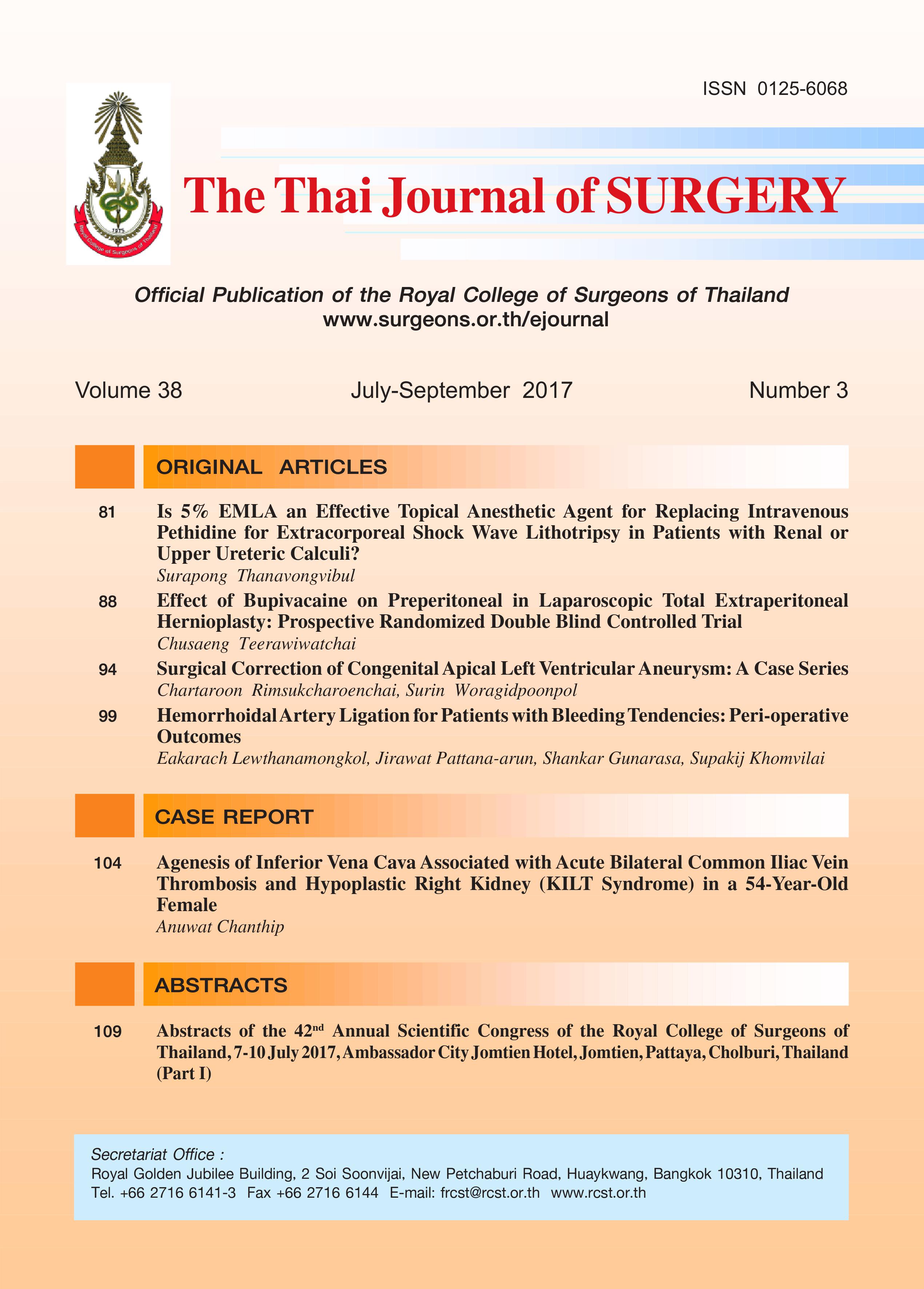Surgical Correction of Congenital Apical Left Ventricular Aneurysm: A Case Series
Keywords:
Congenital left ventricular aneurysm, endoventricular patch, linear plication apical, left ventricular aneurysm, echocardiogram, amputationAbstract
Background: Congenital apical left ventricular aneurysm is a rare cardiac anomaly and the procedure for the corrective surgery is often not well described. The purpose of this study is to present our surgical technique for the management of this rare cardiac anomaly and to report the outcome of our series of patients.
Methods: We detailed our experience with three patients with congenital apical left ventricular aneurysm. Their ages were three months, eight months, and four years, all of whom were operated between the years 2012 and 2013. The main technique was apical amputation and linear repair of ventricular wall with or without endoventricular circular patch under cardiopulmonary bypass.
Results: All patients underwent operations successfully without any perioperative complications and were discharged from the cardiac intensive care unit within one day after surgery. Postoperative echocardiogram showed normal left ventricular function in all cases. All patients have good functional status.
Conclusion: Based on our experience, apical amputation and linear plication with or without endoventricular circular patch is a simple, safe, effective and reproducible technique for the management of congenital apical left ventricular aneurysm.
References
2. Papagiannis J, Van Praagh R, Schwint O, et al. Congenital left ventricular aneurysm: clinical, imaging, pathologic, and surgical findings in seven new cases. Am Heart J 2001;141:491-9.
3. Krasemann T, Gehrmann J, Fenge H, Debus V, Loeser H, Vogt J. Ventricular aneurysm or diverticulum? Clinical differential diagnosis. Pediatr Cardiol 2001;22:409-11.
4. Fellows CL, Bardy GH, Ivey T, Werner J, Draheim J, Greene H. Ventricular dysrhythmias associated with congenital left ventricular aneurysms. Am J Cardiol 1986;57:997-9.
5. Meyersohn J, Schiffer J. Rupture of a congenital aneurysm of the left ventricular apex. Chest 1973;63:838-40.
6. Pomé G, Vignati G, Mauri L, Morello M, Figini A, Pellegrini A. Isolated congenital left ventricular diverticulum. Eur J Cardiothorac Surg 1995;9:709-12.
Downloads
Published
How to Cite
Issue
Section
License
Articles must be contributed solely to The Thai Journal of Surgery and when published become the property of the Royal College of Surgeons of Thailand. The Royal College of Surgeons of Thailand reserves copyright on all published materials and such materials may not be reproduced in any form without the written permission.



